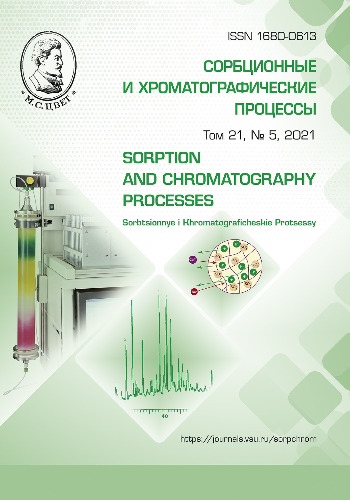Chromatographic analysis of the protein composition of milk thistle fruits growing in the Republic of Dagestan
Abstract
The article is devoted to the study of the composition of amino acids in the proteins of milk thistle fruits (silybum marianum) growing in several regions of the Republic of Dagestan: Suleiman-Stalsky, Kaytagsky, Magaramkentsky, Levashinsky, and Kulinsky Districts. These regions have different environmental and climatic conditions. These areas are located at different altitudes and are characterised by different soil compositions, number of sunny days, precipitation, air humidity, average daytime temperatures, etc. These phenotypic factors could not but affect the amino acid composition of wild milk thistle. To determine the amino acid composition, we used a standardised ion exchange chromatography method with post-column derivatisation with ninhydrin and spectrophotometric detection of purple amino acid adducts at 570 nm and yellow proline adduct at 440 nm. We observed the variability of the amino acid content in milk thistle proteins depending on the growth conditions. Statistical analysis of the data set on the amino acid composition of milk thistle proteins demonstrated not only the presence of significant symbatic and antibatic correlations of the Y=aX+b type (pair correlation coefficient was |R|≥0.55), but also close natural correlations (|R|≥0.80) between the content of some essential and non-essential amino acids, between their content in protein and some individual phenotypic factors. The determined parameters of the nutritional value of milk thistle proteins from different regions of Dagestan and the phenotypic trends in the amino acid composition of milk thistle proteins can be used in further biological, biochemical, and nutritional studies.
Downloads
References
Kurkin V.A., Zapesochnaya G.G., Av-deeva E.V., Ryzhov V.M. et al. Rastoropsha pyatnistaya, Samara, OOO «Ofort», 2010, 118 p.
Caprilova S.V., Rodionova R.A., Vestnik farmacii, 2008, No 3(41), pp. 92-104.
Ramazanov A.Sh., Balaeva Sh.A., Shakhbanov K.Sh., Khimiya rastitel'nogo syr'ya, 2019, No 2, pp. 113-118. DOI: https://10.14258/jcprm.2019024441.
Ramazanov A.Sh., Balaeva Sh.A., Khimiya rastitel'nogo syr'ya, 2020, No 3, pp. 215-223. DOI: https://10.14258/jcprm.2020036434.
Rudakov O.B., Rudakova L.V., Buksha M.S., Sorbtsionnye i khromatograficheskie protsessy, 2020, Vol. 20, No 1, pp. 8-21. DOI https://10.17308/sorpchrom.2020.20/2375.
Ramazanov A.Sh., Balaeva Sh.A., Cverhkriticheskie flyuidy: teoriya i praktika, 2020, No 4, Vol. 15, pp. 49-58.
Lisin P.A., Moliboga E.A., Kanushina Yu.A., Smirnova N.A., Agrarnyj vestnik Urala, 2012, No 3, pp. 26-28.
Lisicyn A.B., Nikitina M.A., Sus' E.B., Pishchevaya promyshlennost', 2016, No 1, pp. 26-29.
Atlas Respubliki Dagestan, pod red. Is-mailova Sh.I. Federal'naya sluzhba geodezii i kartografii Rossii, M., 1999, 65 p.
Zalibekov Z.G., Pochvy Dagestana. Mahachkala, izd. Prikaspijskij institut biologicheskih resursov, 2010, 241 p.
Elektronnyj resurs sajt «Nu i pogoda» https://nuipogoda.ru/ (data obrashcheniya 07.07.2021)
Yushkov S., Biznes pishchevyh in-gredientov, 2018, No 1, pp. 22-27.
Yanchuk T.V., Makarkina M.A., Sovremennoe sadovodstvo, 2014, No 2 (10), pp. 63-69







